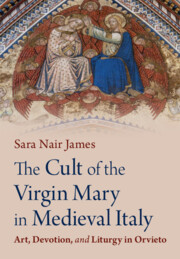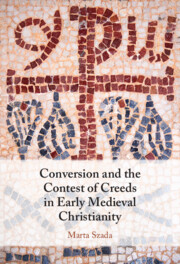Refine search
Actions for selected content:
74 results
2 - Martyrs
- from Part I - Models of Sanctity
-
-
- Book:
- The Cambridge Companion to Counter-Reformation Sanctity
- Published online:
- 12 December 2025
- Print publication:
- 08 January 2026, pp 35-53
-
- Chapter
- Export citation
1 - Procedures and Goals
- from Part I - The Institution
-
-
- Book:
- The Cambridge Companion to the Spanish Inquisition
- Published online:
- 04 December 2025
- Print publication:
- 18 December 2025, pp 23-44
-
- Chapter
- Export citation

The Cambridge Companion to the Spanish Inquisition
-
- Published online:
- 04 December 2025
- Print publication:
- 18 December 2025
7 - Comparisons (2)
- from Part III - Relationship to Other Early Christian Literature
-
- Book:
- The Gospel of Truth
- Published online:
- 23 October 2025
- Print publication:
- 06 November 2025, pp 165-198
-
- Chapter
- Export citation
Chapter 3 - How Milton Defined Heresy and Why
-
- Book:
- Milton's Strenuous Liberty
- Published online:
- 23 October 2025
- Print publication:
- 06 November 2025, pp 86-100
-
- Chapter
- Export citation
Gender Bias in Medieval Inquisitions and its Place in Shaping Knowledge about the Heterodox
-
- Journal:
- Social Science History , First View
- Published online by Cambridge University Press:
- 26 August 2025, pp. 1-31
-
- Article
-
- You have access
- Open access
- HTML
- Export citation
8 - Arianism and Other Christological Disputes
- from Part II - Case Studies
-
-
- Book:
- The Cambridge Companion to Christian Heresy
- Published online:
- 17 July 2025
- Print publication:
- 31 July 2025, pp 156-174
-
- Chapter
- Export citation
Introduction
-
-
- Book:
- The Cambridge Companion to Christian Heresy
- Published online:
- 17 July 2025
- Print publication:
- 31 July 2025, pp 1-14
-
- Chapter
- Export citation

The Cult of the Virgin Mary in Medieval Italy
- Art, Devotion, and Liturgy in Orvieto
-
- Published online:
- 24 July 2025
- Print publication:
- 24 July 2025

The Cambridge Companion to Christian Heresy
-
- Published online:
- 17 July 2025
- Print publication:
- 31 July 2025
12 - The Papacy and the Protestants, 1517–1563
- from Part III - Reformations and Revolutions
-
-
- Book:
- The Cambridge History of the Papacy
- Published online:
- 28 February 2025
- Print publication:
- 20 March 2025, pp 321-342
-
- Chapter
- Export citation
Chapter 2 - Transitions
- from Part I - Recasting German Protestantism, 1750–1790
-
- Book:
- Enlightenment's Reformation
- Published online:
- 21 December 2024
- Print publication:
- 05 December 2024, pp 58-90
-
- Chapter
- Export citation
8 - Religions and the Wider World
-
- Book:
- Merovingian Worlds
- Published online:
- 22 November 2024
- Print publication:
- 05 December 2024, pp 238-267
-
- Chapter
- Export citation
1823: A Year in the Afterlife of Shakespeare and Milton
- Part of
-
- Journal:
- Public Humanities / Volume 1 / 2025
- Published online by Cambridge University Press:
- 07 November 2024, e22
-
- Article
-
- You have access
- Open access
- HTML
- Export citation
Conclusion
-
- Book:
- Conversion and the Contest of Creeds in Early Medieval Christianity
- Published online:
- 06 June 2024
- Print publication:
- 13 June 2024, pp 284-294
-
- Chapter
- Export citation
Introduction
-
- Book:
- Conversion and the Contest of Creeds in Early Medieval Christianity
- Published online:
- 06 June 2024
- Print publication:
- 13 June 2024, pp 1-24
-
- Chapter
- Export citation

Conversion and the Contest of Creeds in Early Medieval Christianity
-
- Published online:
- 06 June 2024
- Print publication:
- 13 June 2024
Chapter 26 - Who Is Jesus Christ?
- from Part IV - Religion
-
-
- Book:
- Antioch on the Orontes
- Published online:
- 06 June 2024
- Print publication:
- 06 June 2024, pp 420-430
-
- Chapter
- Export citation
Understanding the Good: Medieval Inquisitions and Modern Religion
-
- Journal:
- Church History / Volume 93 / Issue 2 / June 2024
- Published online by Cambridge University Press:
- 16 October 2024, pp. 239-262
- Print publication:
- June 2024
-
- Article
- Export citation
2 - Languages of Belief
-
- Book:
- Some New World
- Published online:
- 29 March 2024
- Print publication:
- 18 April 2024, pp 24-67
-
- Chapter
- Export citation
